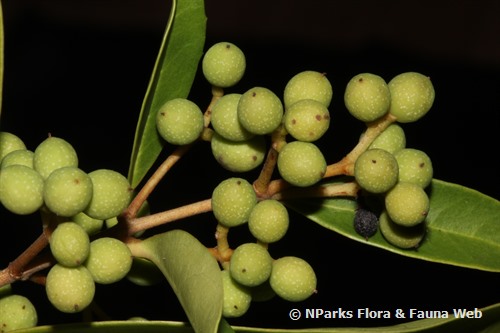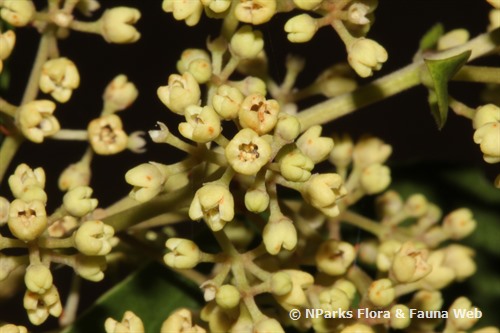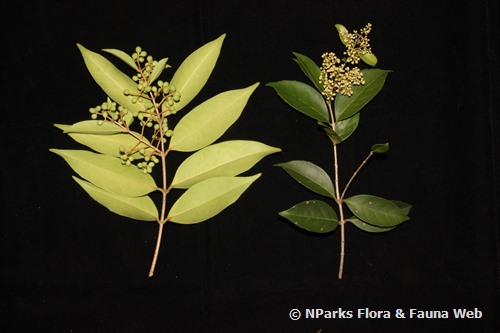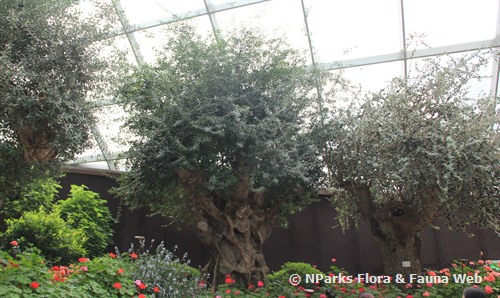
Name
Classifications and Characteristics
| Plant Division | Angiosperms (Flowering Seed Plants) |
|---|---|
| Plant Growth Form | Tree, Shrub |
| Mode of Nutrition | Autotrophic |
| Maximum Height | 10 m |
Biogeography
| Native Distribution | Southeastern China, Hainan, Vietnam, Cambodia, Thailand, Peninsular Malaysia, Singapore, Borneo |
|---|---|
| Native Habitat | Terrestrial |
| Preferred Climate Zone | Tropical |
| Local Conservation Status | Native to Singapore (Vulnerable (VU)) |
Description and Ethnobotany
| Growth Form | It is an evergreen shrub or tree up to 10 m tall. |
|---|---|
| Foliage | Its opposite, stalked leaves have leathery leaf blades that are usually elliptic, often toothed towards the tip, 3–13 by 1.2–6 cm, and purplish-pink when young. |
| Flowers | Its flowering shoot is 1–3 cm long, and found at the leaf axils or just below current leaves. The shoot is branched into 3, with clusters of 3–10 flowers at the end of the branches. Its flowers are dull white and 1.5–2.5 mm long. |
| Fruit | Its shortly-stalked fruits are round, purple-black when ripe, and up to 7 mm wide. |
| Habitat | It grows on rocky and sandy shores. It occurs locally in Pulau Ubin and Pulau Tekong. |
| Associated Fauna | Its flowers are insect-pollinated. |
| Etymology | Latin olea, olive tree; Latin brachiatus, branched in a decussate manner, referring to the flowers arranged in opposite pairs, with each pair at right angles to the next. |
Landscaping Features
| Landscape Uses | Suitable for Roadsides, Parks & Gardens, Coastal |
|---|
Plant Care and Propagation
| Light Preference | Full Sun |
|---|---|
| Water Preference | Moderate Water, Little Water |
| Plant Growth Rate | Moderate |
| Rootzone Tolerance | Saline Soils / Salt Spray |
Foliar
| Mature Foliage Colour(s) | Green |
|---|
Floral (Angiosperm)
| Flower Colour(s) | Cream / Off-White |
|---|
Fruit, Seed and Spore
| Mature Fruit Colour(s) | Black, Purple |
|---|
Image Repository
Others
| Master ID | 33733 |
|---|---|
| Species ID | 8147 |
| Flora Disclaimer | The information in this website has been compiled from reliable sources, such as reference works on medicinal plants. It is not a substitute for medical advice or treatment and NParks does not purport to provide any medical advice. Readers should always consult his/her physician before using or consuming a plant for medicinal purposes. |



